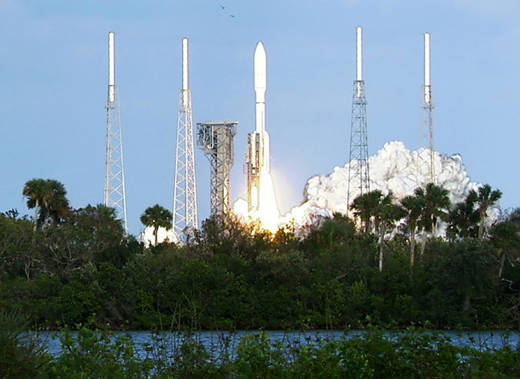“We can’t wait!” tweeted the National Weather Service in Anchorage just before liftoff.
With these two new satellites, NOAA’s high-definition coverage will stretch from the Atlantic near West Africa, a hotbed for hurricane formation, all the way across the U.S. and the Pacific out to New Zealand.
It’s the third weather tracker launched by NASA in just over a year: “three brilliant eyes in the sky,” as NOAA satellite director Stephen Volz puts it. GOES-16 launched in late 2016 and an environmental satellite rocketed into a polar orbit from California last November.
These next-generation Geostationary Operational Environmental Satellites, or GOES, are “a quantum leap above” the federal agency’s previous weather sentinels, Volz said. This is the 18th launch of a GOES since 1975; one was lost in a launch explosion and all but three of the satellites are retired.
Even as it was still being checked in orbit, GOES-16 provided invaluable data to firefighters battling blazes in Texas, Oklahoma and elsewhere last March and to Houston-area rescue teams in the flooded aftermath of Hurricane Harvey last August, according to officials. GOES-16 also observed the uncertain path of Hurricanes Irma and the rapidly intensifying Hurricane Maria in September.
GOES-16 “turned out to be better than we expected it to be,” said National Weather Service director Louis Uccellini, on hand for Thursday’s launch. The satellite wasn’t officially on duty yet, “and we were just standing there gawking at the imagery,”
Predicting Bad Weather
As Hurricane Harvey approached the Texas coast, the satellite revealed the clouds sinking in the eye and the eye expanding as the storm morphed from a category 2 to 4, Uccellini said. Those images helped determine when it was safe for rescue teams to go out and save stranded residents, he added.
The satellite also alerted authorities in Texas and Oklahoma to the eruption of new blazes even before the 911 calls came in, Uccellini said. He said the satellite also tracked the direction of the fires like never before, prompting first responders to later tell NOAA: “You saved lives.”
Two more are planned in this four-satellite series: GOES-T in 2020 and GOES-U in 2024. The $10.8 billion cost includes the development, launch and operation of all four satellites as well as ground systems through 2036.

